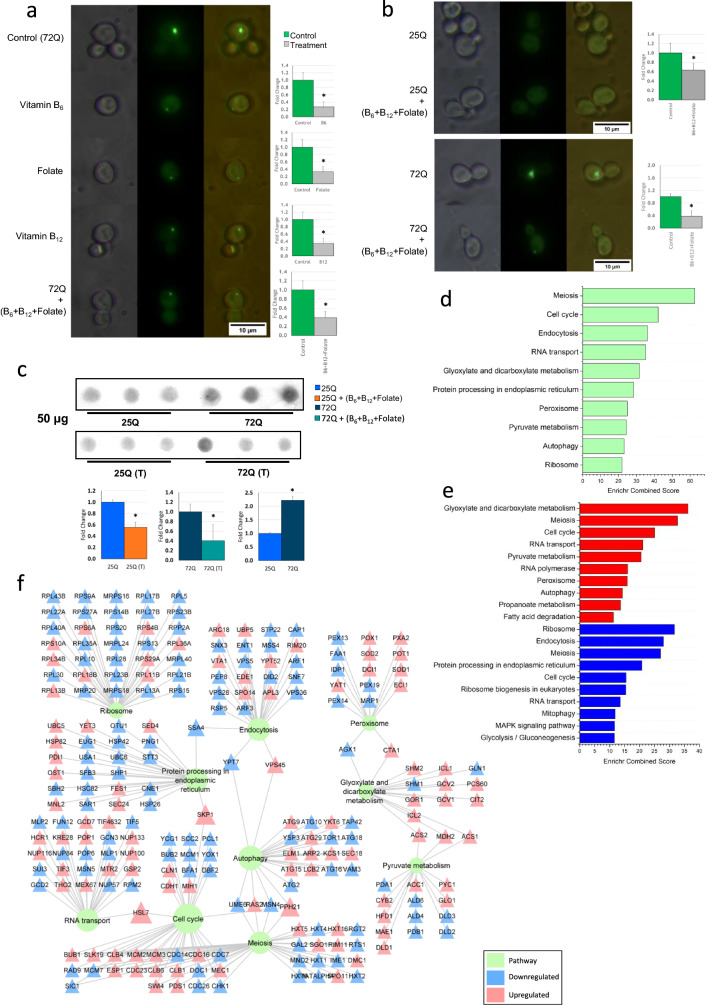Fig. 3.
a Yeast transformed with Htt 72Q, GFP showing the aggregation as foci. Fluorescence data show a reduction in aggregate when yeast model of HD was treated with vitamin B6, B12 and folate individually as well in combination (concentration used 20 μg/ml) when compared to control. Fluorescence quantification showing significant reduction of aggregation in treatment, t-test: *p-value ≤ 0.05. (n ≥ 10). b Treatment of B6, B12 and folate on 25Q and 72Q transformed yeast showed significant reduction in protein aggregates in 72Q, *p-value ≤ 0.05. c Filter retardation assay for yeast Htt 25Q/72Q and B6, B12 and folate treated samples. The intensity of the blot shows aggregation in control and its attenuation in B6, B12 and folate treated yeast samples. The intensity of the blot was calculated and shown to be significantly reduced in the treated sample with a *p-value < 0.05 and n = 3. d Transcriptomics analysis (present study) showing top 10 significantly deregulated pathways (adjusted p-value ≤ 0.05) in 72Q vitamin B6, B12 and folate treated sample and d expression of genes involved in these deregulated pathways (only genes with adjusted p-value ≤ 0.05) shown in form of a network. e Enrichment analysis showing deregulated pathways based on upregulated (shown in red) and downregulated genes (shown in blue) in 72Q B6, B12 and folate treated samples. f The pathway-gene interaction networks. Figure (f) was generated in Cytoscape 3.8.2. The plots d and e was made using Origin software

